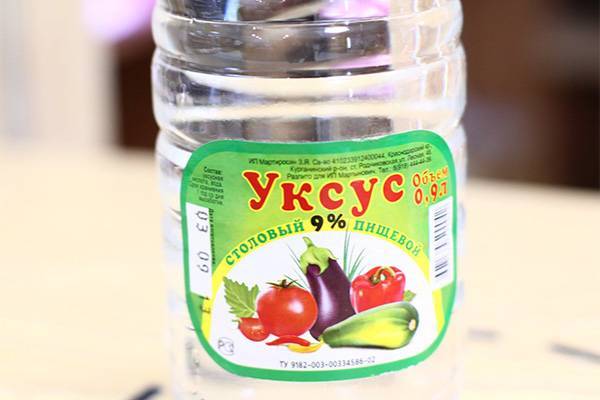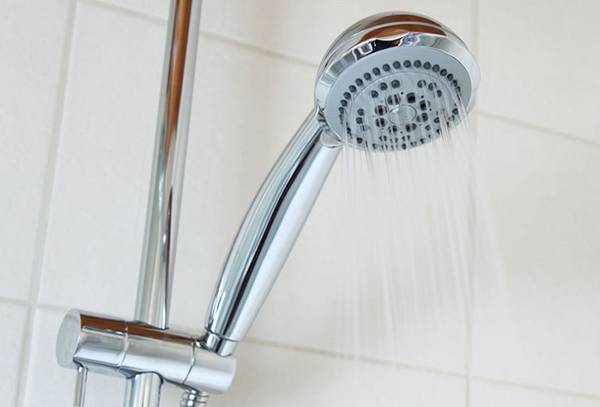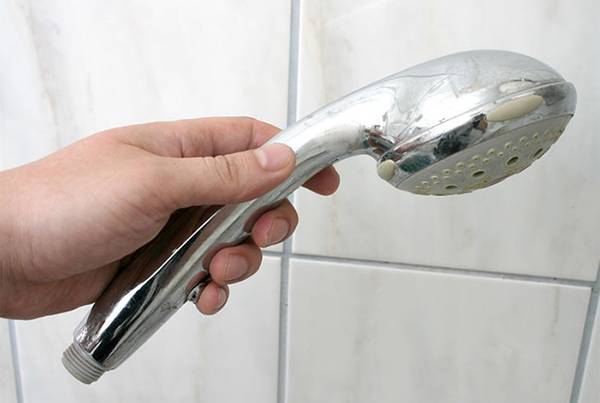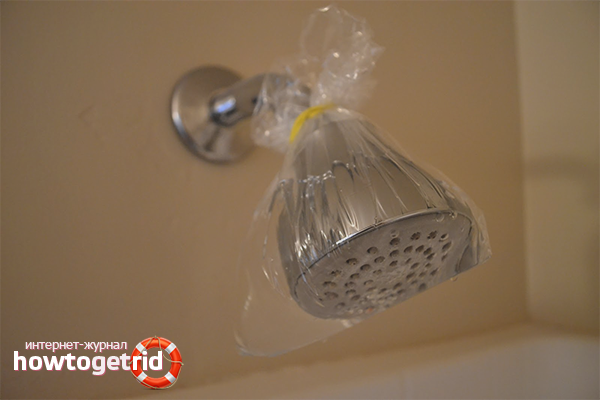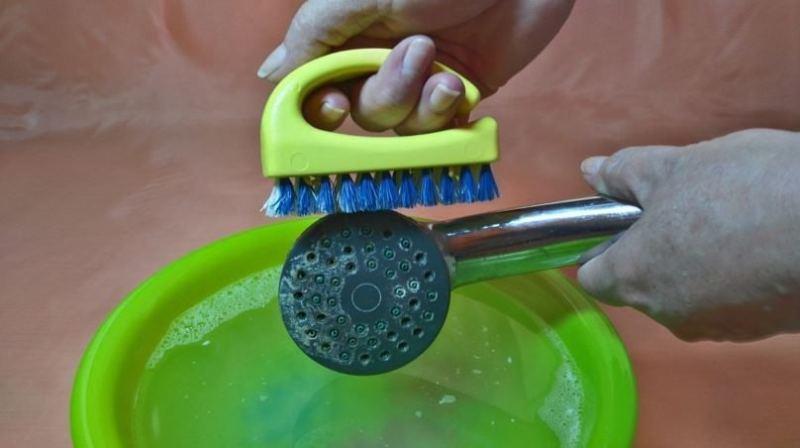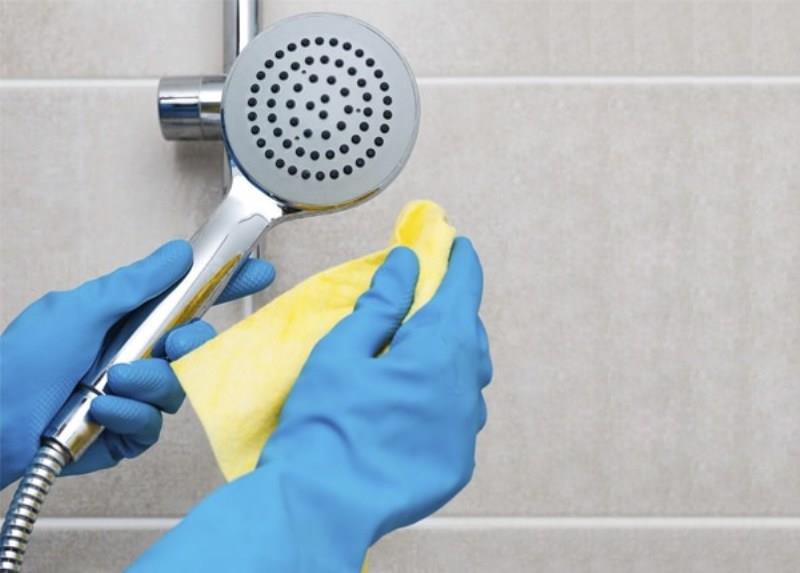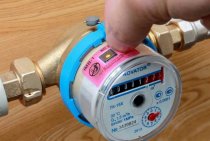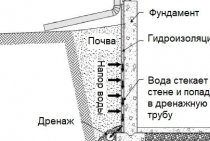Troubleshooting
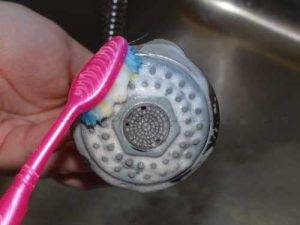
The cleaning process goes as follows:
- First of all, you need to disassemble the watering can. It is advisable to have its operating instructions for this (good models have them in the kit). When the device cannot be disassembled, do not overdo it, because it can simply be broken. In the event that your option is not collapsible, this item should be skipped.
- To begin with, the watering can itself is wiped using detergents. In some cases it helps and in some it doesn't. The reason for this is the accumulated fine particles in the nozzles, which clog the water supply holes. In this regard, in order to eliminate them, it will be necessary to carry out preliminary soaking.
- To carry out such a procedure, you need to pour a little water into a basin, and then add a certain amount of detergent there;
- After that, you need to lower the watering can into this container and leave it for a couple of hours. During this time, there will be a gradual destruction of the limestone plaque located in it.
- Next, you need to brush directly over the watering can to remove residue.
- After that, you need to rinse the device under the tap and wipe it dry. Everything, now the device can be installed in place and used.
This option is the most effective method to remove all accumulated limestone deposits and scale from the watering can. However, good commercial cleaners may not always be at hand.
Therefore, you can use the methods that our grandmothers once used
When using household chemicals, do not forget about the necessary precautions. Gloves must be worn before handling the shower element to prevent chemical burns on the skin.
Oxalic acid
Oxalic acid is sold in a pharmacy. It quickly and effectively removes lime deposits.
Action algorithm:
- Preparation of the solution: in 1 liter of warm water, dilute 2 tbsp. l. oxalic acid. The liquid should be slightly warm, so the product will dissolve better.
- Leave the watering can in the solution for 2-3 hours.
- Then take a brush and clean all the holes.
- At the end, it is necessary to wash off the residues with oxalic acid with clean water.
Work with such a tool is performed in rubber gloves. Oxalic acid acts aggressively, so its use should be addressed very rarely as a last resort.
It is better to use more gentle cleaning methods, such as citric acid or vinegar.
Lemon acid
This cleaner also contains an acid that can break down lime deposits. Lemon perfectly launders any pollution, including plaque.
How to clean a shower head - step by step instructions:
- The device is disassembled and all parts are placed in a deep pan, which is not a pity to use for boiling.
- Elements fall asleep with citric acid. 1 sachet is enough. If the raid has covered all the details and there is a lot of it, then use 2 sachets of citric acid or more. Look at the degree of contamination.
- Fill everything with water. The liquid should cover all parts. You can leave the watering can languish in the solution for 20 minutes, or you can boil it for 10 minutes, and the process of removing limescale will go faster. The citric acid will react with the deposits and a lot of bubbles will appear. Thus, plaque is removed.
- Wait until the water cools down.Take the device out of the water and clean every part with a hard bristled toothbrush.
- Rinse the watering can with water, collect, dry and rub to a shine.
Citric acid effortlessly removes all limescale. This method can be used several times a month. Shower heads made of any material can be cleaned, except for plastic parts, if boiling is necessary.
Dismantling the shower head
The main blockages accumulate inside the shower, and insoluble deposits, such as sand and rust, can only be removed during disassembly. It is advisable to carry it out only with severe clogging. Before starting the process, you need to make sure that the design of the device allows you to do this, since there are models that cannot be disassembled.
Disassembly includes the following steps:
- Disconnecting the watering can from the hose.
- Removing the decorative plug in the center of the divider.
- Unscrewing the screw with a Phillips or flat screwdriver.
- Separation of internal parts from the body.
When disassembling complex structures, such as a rain shower shower cabin, it is better to carefully study the instructions, which must be included in the delivery of plumbing equipment.
After the final disassembly, you can proceed to mechanical cleaning, which includes cleaning the fine meshes with a brush and removing possible insoluble particles from the body and nozzles of the shower head.
Removing limescale from a faucet with vinegar
You need to take:
- gloves
- 7% vinegar,
- old toothbrush
- wire or staple
- a bowl with a rag to remove deposits
When choosing vinegar, be careful not to confuse it with concentrated vinegar essence, which will immediately corrode the shower floor.
- Remove the shower head first. If this causes difficulty, take pliers, but be sure to wrap the reflective surface of the plumbing with a rag beforehand to prevent scratches. If possible, remove the shiny cover and leave only the shower head.
- Place the shower head in a bowl of vinegar heated to 50 degrees. Don't forget to wear gloves.
- If the mixer could not be removed, experienced housewives advise pouring vinegar into a plastic bag and putting the mixer there. In this case, the shower nozzles must be completely immersed in vinegar. Secure the bag with a paper clip or wire. Soak plumbing in vinegar for 15-20 minutes.
- After soaking, limescale deposits simply need to be brushed off with a stiff bristle brush.
- Next, rinse the treated plumbing in hot water.
This simple folk recipe will help remove lime from the surface of the shower head.
To remove lime deposits from the mixer, you can resort to the following tips from housewives:
Chemical cleaning
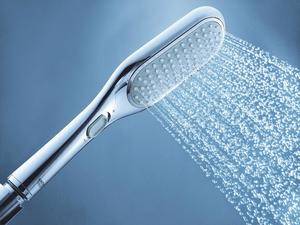
Scale dissolves in various acids, and it is not at all necessary to use expensive store-bought substances, you can get by with improvised means that are often found in everyday life.
Lemon acid
To dissolve scale with it, you will need 25 g of powder, which is the standard size of a pack of acid.
The contents of the sachet should be diluted with about a liter of hot water. After that, a shower head is placed in the solution for about 20-30 minutes. It is not recommended to leave for a longer period, as the citric acid concentrate can damage the plastic parts. After the plaque softens, it is removed with a soft cloth or toothbrush.
Application of vinegar

The exposure time of the shower head in the solution depends on the degree of clogging, to speed up the process of softening the scale, the solution can be heated. It would be ideal to leave the watering can in the vinegar solution overnight, then clean it under running water using a brush.
professional tools
When using specialized descaling products, cleaning will take less time and effort than using household chemicals. The price of such funds will be higher, but they have a number of advantages:
- Specialized products do not damage the surface, unlike a concentrated solution of citric acid and vinegar.
- Better scale dissolution.
- Economic consumption.
- Plaque removal takes much less time.
Vinegar
You can clean the shower head from plaque using table vinegar. Deposits soften under the influence of acid and are easier to remove.
How to clean the shower head with disassembly:
- Disconnect the shower head from the hose and disassemble the shower head. If you don't know how to do this, please read the instruction manual. If you recently installed a new shower head and it's under warranty, make sure you remove it according to the instructions on the packaging.
- Find a container or basin large enough to completely submerge the shower head. Fill the container with a sufficient amount of white vinegar. Take a small container, oblong and low, so you can reduce the amount of cleaning agent.
- Leave the shower head in the solution for 1 hour. If a deeper cleansing is required, you can leave it in the product overnight. If the shower head is made of metal, you can boil it in vinegar for 15 minutes. If it is made of brass, has a nickel or gold plating, leave it in vinegar essence for 30 minutes.
- Remove the device from the container and rinse under running water.
- Do not discard the remaining solution. Take an old toothbrush and give the whole device a good cleaning. Focus on the base where the holes are located. It is there that the greatest amount of deposits accumulates. Clean until all the insides are sparkling clean.
After rinsing the shower head with clean water, use a soft cloth to polish. You can take microfiber or flannel material. Polish the structure until it is completely dry.
Then collect all the parts, and put the shower head in place.
How to clean the shower head from scale with vinegar without disassembly:
- Pour white vinegar into a plastic bag. It is necessary to take enough to completely cover the shower head. Make sure there are no holes in the bag and that it can support the weight of the vinegar for an extended period of time.
- Pour in the baking soda. Vinegar should be twice as much. A reaction should begin, the product will bubble.
- Lift the plastic bag up to the shower head, it should be completely immersed in the solution.
- Secure the bag with tape, a rubber band, or a hair tie. Make sure the polyethylene is well tied and won't slip off.
- Wait one hour. You can leave the vinegar packet on the watering can overnight for a deeper cleansing. The more time you leave the agent to act, the cleaner the device will be.
- Remove the plastic bag. Throw away. Turn on the water supply to the shower. Leave it on until all the product has been removed and the vinegar smell is gone.
If the process needs to be accelerated, before putting on a plastic bag on a watering can, it can be heated or even boiled. The smell will be unpleasant and pungent, so wear a respirator or medical mask.
Spot cleaning with vinegar: the shower head does not need to be removed or disassembled.To do this, moisten the toothbrush in vinegar, then in baking soda and begin to clean the mesh.
Pay attention to the hose itself and the screw that connects the watering can to the hose. They can also be cleaned up this way.
After cleaning is complete, submerge the shower head in water to get rid of excess vinegar and buildup. Don't worry about the smell, it will go away on its own in time. Turn on the water supply and rinse the inside of the device.
Disassembly
To better wash the device, you need to disassemble it. This will help remove limescale in all hard-to-reach places.
You will need a wrench and a soft non-slip cloth, a screwdriver and a knife.
What to do:
- Remove the shower head by turning it counterclockwise. If there is a nut, use a wrench (you can not use pliers, you can damage the finish surface).
- First you need to remove the plug, it is located in the center of the grid. It will be difficult to remove it with your hands, try to pick it up with a knife.
- There is a screw under the plug, it is unscrewed with a screwdriver.
- Then carefully remove the mesh so as not to damage the rubber gasket and proceed to cleaning.
If you can’t disassemble the shower head, it’s not scary. You can clean the mesh without disassembly.
Cleaning with improvised means
As improvised means, everything that every housewife should always have at hand can be used:
Vinegar. It can be used to remove any type of pollution, in particular limestone deposits.
However, it is important to dilute 70% vinegar essence in water in order not to damage the coating of the watering can itself. To do this, there should be a consistency of 1 to 20
In the case of using 10% table vinegar, it will be enough to dilute it with water in a ratio of 1 to 1. To achieve better efficiency, the resulting solution must be heated. After that, it is necessary to lower the watering can into the resulting solution and, after a certain time, remove it, brush it and rinse it.
Lemon. Since lime is afraid of any acid, citric acid can also be used to eliminate it. To do this, pour up to 50 grams of citric acid into one liter of water, then place a watering can. You can also use freshly squeezed lemon juice. After a certain time, the watering can also be cleaned and dried.
Baby oil. It may sound strange, but children's oil contains ingredients that allow you to dissolve limestone deposits. To do this, you need to take a cloth, soak it with this agent, and then process all the holes of the watering can with it, leaving it for a couple of hours. After this time, you need to use a brush to remove all remnants of plaque and rinse with water.
Oxalic acid. Such a tool is very aggressive, so its use should be only in cases where conventional methods simply cannot cope. You can buy it in regular pharmacies. So, for one liter of water, it is necessary to dissolve a couple of tablespoons of acid, after which place a watering can in a container with a solution. If sufficiently large or old elements of limestone deposits are present, the concentration of oxalic acid must be increased to eliminate them. When the soaking process is over, you need to clean the nozzles using a regular toothbrush. This will remove even small particles of plaque.
Baking soda, vinegar, and also ammonia. This kind of means, in addition to allowing the cleaning of plaque in the form of lime, also eliminates the possible appearance of various fungal spores. To create the necessary solution, you need to take half a glass of vinegar, add a few tablespoons of soda there, as well as 150 ml of ammonia. This is all mixed, after which it is heated to 50 degrees. After that, the watering can is lowered into this solution and left there for one hour, then washed, and the device is ready for use.
In order not to have to get rid of limestone deposits, it is necessary to take preventive measures in time. In this case, plumbing will work for a long time.
How to easily remove plaque from plumbing, see the tips in the following video:
How to clean a shower head with improvised means
- Vinegar. It perfectly fights with any pollution, and especially with limescale. If you have 70% vinegar essence in front of you, it must be diluted with water so as not to spoil the coating of the watering can. Dilute the essence 1:20. If you use ordinary table vinegar 10%, you can dilute it in half with water. The prepared vinegar solution must be heated to make it more effective. Dip the watering can into the warm solution and leave for a while. After that, clean the watering can with a brush and rinse thoroughly.
- Lemon. Lime is afraid of acid, including citric acid. Dissolve three sachets of citric acid (10-15 grams each) in a liter of water and dip a shower head into the solution. You can also pour a watering can with pure natural lemon juice. After that, leave the watering can so that the plaque dissolves, and after a while rinse it.
- Baby oil. Oddly enough, but baby oils contain substances that can dissolve limescale. Pour a little oil on a cloth and wipe all the lime deposits with it. Carefully process all nozzles and leave the watering can for several hours. After that, clean the remaining plaque with a brush and rinse the shower with soapy water. This is done so that the oil does not leave greasy traces.
- Oxalic acid. This is a fairly aggressive remedy to use when other methods fail. Oxalic acid is sold in pharmacies and is very aggressive. Dissolve two tablespoons of powder in a liter of water and dip a shower head into the solution. With large and old foci of limescale, it is necessary to increase the concentration of acid. After soaking, clean the nozzles with an old toothbrush to clean any small hard-to-reach spots.
- Baking soda, ammonia, vinegar. This tool will not only clean the shower head from limescale, but also disinfect surfaces, get rid of possible fungal spores. For a liter of water, you will need half a glass of vinegar, three tablespoons of baking soda and three bottles of ammonia (50 ml each). Everything needs to be mixed and heated to 50-60 degrees. Dip the shower head into the hot solution and let it sit for 40 minutes. After that, rinse all plumbing with warm water and wipe dry.
When using household chemicals (professional or home) do not forget about safety precautions. Be sure to wear gloves so as not to burn the skin and a respiratory mask so as not to be poisoned by the fumes of chlorine and vinegar
Any housewife dreams that every corner of her house looks perfect. This is not difficult to achieve. In order not to suffer, getting rid of complex old stains and limescale, you need to do preventive cleaning on time. And then your plumbing will shine!
Best Answers
BASIL:
if the pressure from the shower faucet is good, then try to replace the watering can itself
Vladimir Kovalkov:
there is such a plastic pipe in the shower - throw it away, and put a gasket instead
mood color:
The shower is clogged. We must change.
vve-67@mail :
The holes in the watering can are clogged.
Grandfather Au:
there is a case in the watering can as they said. Unscrew the watering can from the hose and look at the pressure from the hose, if normal, remove the cap in the middle and unscrew the grate. if there is no pressure from the hose, the problem is in the switch, you need to look at the spool. By the way, there are also switches on the watering can
Spitz Pomeranian:
The problem is in the watering can, or rather, that the holes in the watering can have increased and the pressure has dropped. This happens when the watering can is old and you decide to clean the limescale. As a result of cleaning, the rubber nozzles of the watering can break off and the holes increase. In this case, CHANGE THE WATERING WATER.
Stas Shabanov:
When a mixer is installed, sometimes they put gaskets with a mesh, they are probably clogged. Turn on cold first, then hot, if the pressure is different, then this is the probable cause
Galina Bogomolova:
Almost always so. Change watering can. Rubles for 100 can be bought. (It could have been cheaper, but I am making allowances for the crisis).
Elektriker (DIXI!I):
watering can, hose section small
Mikhail Podvolotsky:
Maybe not even a blockage. It's a matter of design. Imported ones are designed for high pressure (up to 2 atm), and at home, according to the old standards, they were counted at 0.3-0.5 atm. Change watering can. And look at the passport of the mixer, what is the required pressure for a normal spout.
Cleaning rules
For the most complete cleaning of the sprayer, for example, in order to carry out a subsequent repair of the shower head, it is necessary:
- apply the selected cleaning agent to the surface of all components (in case of slight contamination) or soak the elements that make up the equipment for a certain period of time;
- clean the surfaces with a hard brush (you can use a toothbrush);
Hard brush cleaning
- if necessary, additionally clean the nozzle openings with a toothpick or other sharp object;
- rinse under running water;
- wipe the elements of the shower head with a soft cloth to avoid the formation of streaks.
Removing streaks from the device case
Other home remedies for cleaning watering cans
Not everyone knows how to clean the shower head from scale using the tools that are in every home, so you should familiarize yourself with the issue in more detail. Consider the components that can remove limescale:
Lemon. We have previously found that various formations are destroyed after contact with acid, including citric acid. To prepare the mixture, we need 1 liter of water and 3 packets of citric acid (15 grams each), mix thoroughly
After dissolving the acid, the shower head can be lowered into the container, it is important that the liquid completely covers all the elements, it is advisable to immerse the watering can in disassembled form. In this case, it is better to put the rubber pad aside so that the acid does not destroy its structure.
Natural lemon has no less effective properties, so you can drip lemon juice on the surface. After some time (at least 20 minutes), the dissolved plaque should be removed and the watering can should be collected.
Baby oil. For some, it will be surprising to learn that baby oil contains ingredients that do an excellent job of removing limescale. To do this, we need to pour a certain amount on a piece of cloth, after which we wipe the surface with a coating. This must be done carefully, you can even pour a certain amount into the internal cavity, but for this you need to disassemble the device. After processing, we leave the watering can for several hours so that the active components penetrate deep into the structure and split the lime. Next, you can remove the residue with a brush, and then wash the device with a solution of warm water and soap. Such manipulations allow you to remove traces of fatty oil.
Oxalic acid. This tool has a rather aggressive environment, so it should only be used if other methods have not been effective.
Oxalic acid is sold in a pharmacy, you should work with the substance with extreme caution, using protective elements. To prepare the solution, you need 1 liter of water and 2 tbsp.
tablespoons of acid in powder form, these components are thoroughly mixed until dissolved. If the affected area is large, and the watering can has been cleaned for a long time, then the concentration of the agent can be increased. Immerse the watering can in a container with a solution for a while, after which the surface is cleaned with a brush
It is important to pay attention to hard-to-reach places, so that even small deposits do not remain, otherwise cleaning will be ineffective.
Baking soda, vinegar, ammonia. This solution allows not only to remove limescale and other formations, but also to cope with pathogenic microorganisms, for example, fungus
For cooking, add 150 ml of ammonia, 0.5 cups of vinegar and 3 tbsp. to 1 liter of water. spoons of soda. This mixture is thoroughly mixed and heated to 60 degrees. The watering can must be lowered into this solution for at least 40 minutes. Then the plumbing is washed with warm water, and also wiped dry.
Regular cleaning of plumbing allows you to extend the life of its use, and this, in turn, saves money. Now you know how to properly clean your shower head using home remedies. Buying expensive household chemicals is not at all necessary, since they have the same efficiency as the components that are in every home, but much cheaper. It has been proven that some professional household chemicals cope with pollution worse than, for example, vinegar or oxalic acid.


